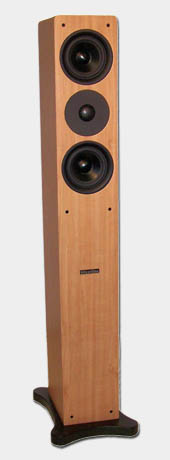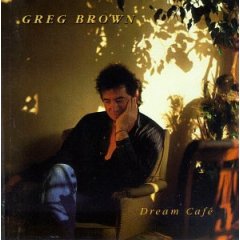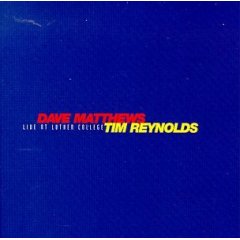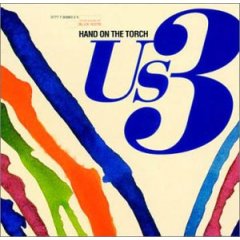Silverline Audio Prelude Loudspeakers
| Silverline Audio Prelude Loudspeakers |
| Doin’ the Neutron Dance |
|
|
|
March 2007 |
 Last year at the 2006 CES, I met Silverline Audio’s enthusiastic head honcho, Alan Yun. I had brought along a small bag full of silver demo discs so that I might listen to new gear with a familiar musical reference. As it turned out, I was very impressed with Alan’s new entry-level speaker, the Prelude. I couldn’t believe the big, dynamic sound emanating from those svelte towers. It was clean, the bass was articulate, and I was scratching my head at the thought of how Alan Yun had managed to coax such expansive, lifelike sound from such diminutive speakers.
Last year at the 2006 CES, I met Silverline Audio’s enthusiastic head honcho, Alan Yun. I had brought along a small bag full of silver demo discs so that I might listen to new gear with a familiar musical reference. As it turned out, I was very impressed with Alan’s new entry-level speaker, the Prelude. I couldn’t believe the big, dynamic sound emanating from those svelte towers. It was clean, the bass was articulate, and I was scratching my head at the thought of how Alan Yun had managed to coax such expansive, lifelike sound from such diminutive speakers.
At that time, I candidly suggested to Alan that he should consider sending me a pair for review. He kindly obliged and my experience and review of that original version has opened my mind to the belief that very realistic sound can come in a small package.
After the review, I reluctantly returned the speakers to Alan because of a small area of brightness I had observed in the lower highs. I told Alan that if he could “fix” this one area that the Preludes could serve duty in my reference system. I offered a couple of suggestions as to how he might eliminate this flaw and left it at that, not knowing if he would take the bait or not.
Several months later I had my answer. Mr. Yun had e-mailed me to say that he had revised the Preludes and that he had come up with an improved version. He said he would like to send me a pair for evaluation as soon as they were in production. How could I refuse? In mid-November of ’06 the new Preludes arrived.
Upon opening the box and unpacking the speakers, bases, and parts, I noticed that the cabinets looked more elegant with the front panel now being covered in the buyer’s choice of light cherry or dark rosewood wood veneers (vinyl). Curiously, the “rosewood” finish appeared closer to dark walnut to me, though I reasoned that a rosewood Prelude of another color would sound as sweet.
For those unfamiliar with the Preludes, they are slim, floor-standing towers, each containing a 1″ aluminum/magnesium alloy dome tweeter, flanked by a pair of 3.5″ aluminum/magnesium alloy midrange-woofers. The claimed frequency response is 35Hz to 28kHz; sensitivity is 91dB; and the enclosures measure 40”H x 5”W x 8”D. Gold-colored-metal feet are supplied with the bases, which are broader and will not penetrate carpet like the spikes supplied with the original model. The fatter feet provide the requisite stability and facilitate easier placement and positioning. Admirably, the price has been held at $1,200/pr.
The Improvements
What Yun had done, was to upgrade virtually every critical part of the speaker. Here’s the laundry list:
Tweeter upgraded to a much bigger magnet motor with a lighter diaphragm free of metallic glare.
Woofers upgraded to double magnet motors, which provides better bass control, higher power handling, and a slight increase in sensitivity.
Cabinet: the thickness of the side walls increased from ½-inch to ¾-inch, and the front and rear baffles were increased from ¾-inch to 1-inch to decrease wall-flex and resonance.
Crossover relocated to the bottom of the cabinet, away from any interference from drivers; the crossover is mounted directly on the end of the speaker binding posts to obtain the shortest signal path
upgraded speaker binding posts
Neutron Star of the Audio Galaxy…?
I use the above metaphor to describe how I view the Prelude in relation to larger, more conventional speakers. Click the link above to see Wikipedia’s definition of a neutron star and you’ll get the idea. What you see is a pair of small, slender tower speakers with nothing in their outward appearance to hint at the horsepower contained under the hood and their ability to perform like their much larger brethren.
It would be irresponsible of me to say that the Preludes eclipse all comers and I’m not about to do that. But the Preludes have many strengths, starting with the fact that they are unobtrusive enough to be accepted by most significant others (especially if presented with a couple of much larger alternative candidates). Add to this that they are amplifier-friendly and can be driven by the vast majority of amplifiers, even low-powered tube amps. Indeed, I achieved very good results driving the original Preludes with a pair of 8-watt Dignity Audio 300B monoblock amplifiers as long as I held the volume to moderate levels. They also worked admirably with the more powerful Manley Mahi monoblocks, a pair of NuForce Reference 8.02’s, and a TAD-60 amp (in Triode mode).
For the purpose of this review, I mainly used a Kavent A210 tube/MOSFET integrated amp that is rated at 100 watts/channel into the Prelude’s nominal 8-ohm load. Frankly, I achieved such impressive results with the Kavent that I saw no need to experiment further, especially in light of my many successful amp matings with the original Prelude. Please refer to my original review to learn how the Preludes were positioned in my room.
Let’s Cut to the Chase
 When I first hooked the Preludes up and began playing them, they sounded somewhat less dynamic than I remembered and had less bloom in the upper midrange. This was mostly noticeable on recordings containing trumpets and brass, and on some vocals. So I let them break in over the course of the next few weeks and after that time I noticed that the brass instruments sounded more realistic and that the Preludes could belt out loud vocals with clarity and not a hint of compression. Playing through selections from Greg Brown’s Dream Café [Red House RHR CD-47] I was astounded at how well the Preludes could handle loud and dynamic vocals. And this was true for both male and female singers.
When I first hooked the Preludes up and began playing them, they sounded somewhat less dynamic than I remembered and had less bloom in the upper midrange. This was mostly noticeable on recordings containing trumpets and brass, and on some vocals. So I let them break in over the course of the next few weeks and after that time I noticed that the brass instruments sounded more realistic and that the Preludes could belt out loud vocals with clarity and not a hint of compression. Playing through selections from Greg Brown’s Dream Café [Red House RHR CD-47] I was astounded at how well the Preludes could handle loud and dynamic vocals. And this was true for both male and female singers.
 Then I whipped out an old favorite, Dave Matthews and Tim Reynolds Live at Luther College [RCA 67755]. I really like this recording for evaluation purposes because Tim Reynolds is so blazingly fast on the acoustic guitar that it is very difficult for most speakers to get him 100 percent right. Not only do the guitar licks exhibit both speed and sweetness, but it is extremely difficult for a speaker to correctly reproduce the full harmonic structure of the notes, from the upper-bass fundamentals to the higher-frequency harmonics. Many speakers I’ve encountered can not manage to do justice to this complex recording.
Then I whipped out an old favorite, Dave Matthews and Tim Reynolds Live at Luther College [RCA 67755]. I really like this recording for evaluation purposes because Tim Reynolds is so blazingly fast on the acoustic guitar that it is very difficult for most speakers to get him 100 percent right. Not only do the guitar licks exhibit both speed and sweetness, but it is extremely difficult for a speaker to correctly reproduce the full harmonic structure of the notes, from the upper-bass fundamentals to the higher-frequency harmonics. Many speakers I’ve encountered can not manage to do justice to this complex recording.
As an example of this, my larger VMPS RM30 speakers, with their super-fast ribbons, better capture the clarity and speed of Reynold’s fretwork. The Preludes, on the other hand, sound a bit sweeter and seem to grab the entire notes with their low and high frequency harmonics reproduced in just the right proportions. My guess is that the Preludes may be a little more linear in the frequency range of the guitar. If I could somehow combine the transient speed and incisiveness of the RM30’s ribbons with the slightly more musical harmonic portrait the Prelude’s deliver – well, that would really be something special. And the Preludes do not sound “slow” by any means; they are just perceptibly slower than the ribbons, but sound faster than many speakers that use dynamic cone drivers. This is also something that is tricky to pin down, because a slight difference in the performance of the respective system’s amplification chains also plays into the final sonic waveforms that emanate through their associated speakers. That said, I can live happily with either system’s presentation.
 Another thing the Preludes managed to capture extremely well, during, and especially at the end of Matthew’s “Ants Marching,” was the feeling that I was right there in the middle of the auditorium with layers of concert attendees clapping, hooting, hollering, and making other strange noises. The sea of people was deep, wide, and seemed to envelope the room. The clarity and multi-layering of the audience was an exceptional and spectacular illusion. Another recording that seemed to transcend the room boundaries is US3’s “Tukka Yoot’s Riddim,” fromHand on the Torch [Blue Note CDP 0777 7 80883 2 5]. It made me feel right at home, surrounded by restless natives and all sorts of percussive instruments. In fact, in my room the Preludes delivered such expansive, layered, and precise aural imagery that once heard would convince most folks that even the best of headphones are not worth listening to.
Another thing the Preludes managed to capture extremely well, during, and especially at the end of Matthew’s “Ants Marching,” was the feeling that I was right there in the middle of the auditorium with layers of concert attendees clapping, hooting, hollering, and making other strange noises. The sea of people was deep, wide, and seemed to envelope the room. The clarity and multi-layering of the audience was an exceptional and spectacular illusion. Another recording that seemed to transcend the room boundaries is US3’s “Tukka Yoot’s Riddim,” fromHand on the Torch [Blue Note CDP 0777 7 80883 2 5]. It made me feel right at home, surrounded by restless natives and all sorts of percussive instruments. In fact, in my room the Preludes delivered such expansive, layered, and precise aural imagery that once heard would convince most folks that even the best of headphones are not worth listening to.
I’d be very remiss if I didn’t mention the extremely high quality of the Prelude’s bass reproduction. The Prelude’s are taut, dynamic, and punchy. Their bass is very linear to my ears, which results in qualities such as proper pitch and just the right amount of upper bass emphasis on male vocals and many instruments like guitar and piano that deliver energy from the bass through the midrange. Delving into the mid-30Hz’s, the Preludes do not provide a lot of output in the lowest audible octave, but I feel they redeem themselves by being way above average in their pitch definition and articulation of the mid and upper bass frequencies.
Indeed, listening to the big bass drum chime in on the intro of Yusuf’s “The Beloved” from his An Other Cup (YA/Atlantic 94550-2), the power of that initial strike really took me by surprise. It was a very distinct boom that coupled to the room in a way that small woofers normally cannot manage. Likewise, I had to scratch my head in disbelief as I heard the Prelude’s belt out the low organ notes in the beginning of Yusuf’s (a.k.a, Cat Steven’s) apologetic, “Don’t Let Me Be Misunderstood.” In my smaller listening room, The Prelude’s displayed nearly the same level and quality of bass that my RM30’s with their two 6.5” mid-woofers, two 6-inch passive radiators, and 10-inch “Megawoofers” could deliver in my large listening room. That really surprised me. I did find the Prelude’s bass slightly wanting on recordings with very low double-bass or Piano notes, but they did do a very credible job reproducing the lower registers of those instruments most of the time.
And the Prelude’s sense of Pace, Rhythm, and Timing is second to none. I imagine that Techno fans would have a blast with these speakers because they are so poignant and articulate at delivering fast, punchy bass notes. Listening to Regina Spektor’s “Edit,” fromBegin to Hope [Sire 44315-2] is case in point, where again, the Prelude’s dual 3.5” woofers seemed to be the equal of the RM30’s dual 6.5” composite woofers in the way that they defined and punctuated the bouncy mid-bass notes.
Most importantly, the Preludes are capable of capturing the soul of the music, eliciting beauty from instruments like the guitar in a way that only the finest transducers can manage. The effect was hypnotic when playing through various cuts on Carlos Santana’sSupernatural (Arista 07822-19080-2). On Songs like “Love of my Life,” and “El Farol,” Santana’s guitar wept with such soul and sincerity that was both beautiful and moving. Sometimes in Show-Biz, they speak of how an artist performs a particular song in such a convincing manner that they literally “make it their own.” This is what the Preludes did for Supernatural.
Finally, I find the treble spectrum of the new Preludes to be smoother and less fatiguing, no longer exhibiting the narrow band of brightness that became my main grievance with the original version. While I wouldn’t deem the Prelude’s treble performance “state-of-the-art,” it is certainly detailed and non-fatiguing. The Preludes do a nice job of portraying cymbals and high-frequency overtones in a way that is natural and consistent with the dynamic ebb and flow of the music.
If anything, I would say that the new Prelude’s treble sounds slightly subdued compared to the original version and on certain recordings with copious high-frequency shimmer and energy, the upper treble appeared somewhat reticent. Indeed, with the new version I found myself wanting to use brighter-sounding silver cables as opposed to copper-based cables that I used to “tone down” the original version. It seems that Alan Yun may have slightly over-compensated his crossover change in response to my complaint of mild brightness in the original Preludes. Still, overall, I prefer the newer version’s treble with most of my recordings, because the mild high-frequency reticence is easier on the ears and more tolerable for the long haul.
Caveats
The Prelude’s do not provide much energy in the lowest bass, but you won’t mind once you hear what they can do in their useable range. Bass lovers can always add a subwoofer for occasional use with their favorite rattle-the-walls material. I used the review speakers with a TAD, 12-inch front firing sub with very good results, but many times I never felt the need to turn the subwoofer on.
Aside from the above it is difficult to find fault with these speakers, especially considering their entry-level price. Ultimately, they lack the last tiny bit of incisiveness and upper-frequency air of the better beryllium, ceramic, or ribbon designs considered to be “state-of-the-art.”
Audible evidence of crossover effects at about 3.5kHz is hard to pin down. While I wouldn’t say that the Prelude’s are quite as seamless as a quality, single-driver, design, I would posit that crossover effects are minimal and are difficult to detect with most recorded material.
Conclusion
Frankly, these little gems have won my heart. They are attractive, unobtrusive, and should work well with the vast majority of amplifiers, be they tube, solid-state, or digital. Even more importantly, they will perform at a very high level in small to average size rooms, where larger speakers with larger woofers will either not fit or will not provide a natural tonal balance.
Indeed, the new Preludes are able to provide a more accurate tonal balance in a room where other highly touted speakers, most notably the Audio Physic Virgo II (due to bass issues), had failed.
In my opinion, the Silverline Audio Preludes set the bar high for the level of performance that can be achieved at anywhere near their price. They deliver wonderfully articulate bass, superlative soundstaging; and more importantly, provide an emotional connection to the music and the artist’s intentions. Accordingly, this latest version will take its place as my new small-room reference loudspeaker.
__________________
Frank Alles
Specifications
Design (Bass Reflex): 2 way
One 1″ aluminum/magnesium alloy dome tweeter
Two 3.5″ aluminum/magnesium alloy mid/woofer
Frequency Response: 35 – 28,000 Hz
Sensitivity: 91 dB
Nominal Impedance: 8 ohms
Crossover Frequency: 3500 Hz
Recommended Power: 10 -300 watts RMS
Dimension (H x W x D): 40″ x 5″ x 8″
Shipping Weight: 60 lbs./pair
Speaker Connections: Bi-wire
Price: US$1,200.00/pair
Finishes
Cherry in vinyl
Rosewood in vinyl
Silverline Audio
936 Detroit Ave., Unit C
Concord, CA 94518
Tel: +1 925 825 3682
Fax: +1 925 256 4577
E-mail: sales@silverlineaudio.com
Web: www.silverlineaudio.com
![]()
Don’t forget to bookmark us! (CTRL-SHFT-D)
Stereo Times Masthead
Publisher/Founder
Clement Perry
Editor
Dave Thomas
Senior Editors
Frank Alles, Mike Girardi, Russell Lichter, Terry London, Moreno Mitchell, Paul Szabady, Bill Wells, Mike Wright, and Stephen Yan,
Current Contributors
David Abramson, Tim Barrall, Dave Allison, Ron Cook, Lewis Dardick, John Hoffman, Dan Secula, Don Shaulis, Greg Simmons, Eric Teh, Greg Voth, Richard Willie, Ed Van Winkle, Rob Dockery, Richard Doran, and Daveed Turek
Site Management Clement Perry
Ad Designer: Martin Perry





Be the first to comment on: Silverline Audio Prelude Loudspeakers